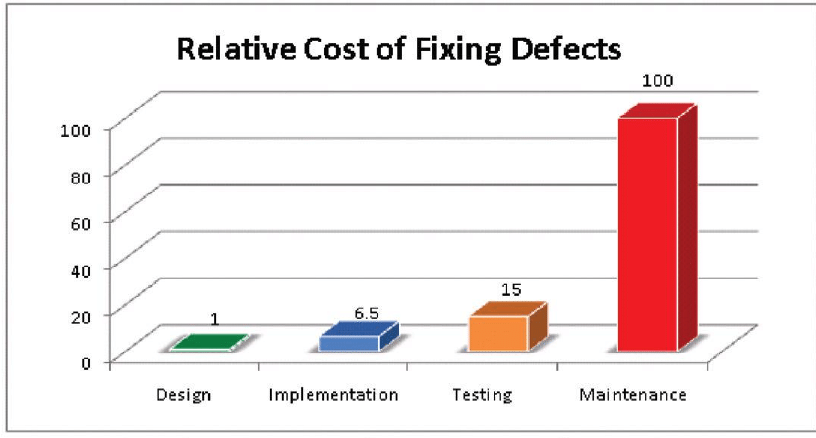Catch Bugs Before They Cost You: The Shift-Left Testing Approach
Published on: November 22, 2024
Ever had to spend more than your project’s budget because bugs surfaced just before release? When defects are discovered late in the development cycle, the costs skyrocket. This highlights two key points: testing is essential, and early testing is crucial.
In software development, testing is undeniably important. Catching and fixing bugs early can save time, money, and resources. However, traditional testing methods often place QA at the end of the cycle, which leads to late defect detection, costly fixes, and delays.
This is where Shift-Left Testing comes in. Shift-Left integrates testing earlier in the Software Development Life Cycle (SDLC) to improve quality and reduce costs. In this blog, we’ll explore what Shift-Left is, why it matters, and how it can significantly reduce defect costs.
Understanding the SDLC and Testing Phase
The Software Development Life Cycle (SDLC) consists of multiple phases, with testing often left towards the end. The key phases include:
- Requirement Analysis: Understanding what needs to be built.
- Design: Structuring system architecture and components.
- Implementation: Writing code and building features.
- Testing: Validating functionality, performance, and security.
- Deployment: Releasing the software to production.
- Maintenance: Ongoing bug fixes and improvements.
Traditional models place testing after implementation, but Shift-Left advocates integrating testing earlier, ensuring defects are caught as soon as possible.
Why Shift-Left? The Cost of Late Bug Fixes
Bugs become exponentially more expensive to fix the later they are detected. According to the IBM Systems Science Institute’s report on the relative cost of fixing defects, the cost of resolving a defect follows a pattern:
- Requirement Phase: $1 (Cheapest)
- Design Phase: $5-$10
- Development Phase: $10-$50
- Testing Phase: $50-$200
- Production Phase: $500-$10,000+ (Most Expensive)

Source:Integrating Software Assurance into the Software Development Life Cycle (ResearchGate)
While financial loss is one of the most obvious consequences of late defect detection, the impact extends far beyond monetary cost. Let’s explore additional risks associated with delayed bug fixes:
- Reputation Damage: A high-profile software failure can significantly impact a company's reputation.
- Project Delays & Missed Deadlines: Defects found late in the development cycle can cause substantial project delays, pushing release dates back and impacting product roadmaps.
- Regulatory & Legal Risks: For industries like healthcare, finance, and aviation, software failures can result in legal liabilities and compliance violations.
- Security Vulnerabilities: Late-discovered bugs, especially in production, can expose systems to cyberattacks and data breaches.
The Real-World Impact:
- NASA's Ariane 5 rocket failure (1996) → Cost: $370 million due to a software bug found in production.
- Knight Capital Group’s Trading System Bug (2012) → Cost: $440 million due to a defect in production deployment.
- Equifax Data Breach (2017) → Cost: $700 million caused by an unpatched vulnerability in Apache Struts.
What is Shift-Left Testing?
Shift-Left Testing is the practice of moving testing earlier in the SDLC to detect defects sooner. Instead of leaving testing for the final stages, QA and developers collaborate from the requirement analysis and design phases.
Key Principles of Shift-Left Testing
- Test Early: Identify potential defects before development starts.
- Test Often: Integrate automated tests in CI/CD pipelines.
- Collaboration: QA, Developers, and Business Analysts work together from day one.
- Prevention Over Detection: Reduce defects before they occur, rather than catching them late.
How to Implement Shift-Left Testing
1️⃣ Integrate Testers Early
- Integrate testers from the start to understand the project’s architecture and design.
- By engaging in discussions early, testers contribute to identifying and preventing defects before they impact the final product.
2️⃣ Automate Unit & API Testing
- Developers write unit tests using
JUnit, TestNG, or xUnit. - API testing using
Postman, RestAssured, or Karateensures backend stability.
3️⃣ Continuous Integration & Early Feedback
- Implement CI/CD pipelines to run automated tests on every commit.
- Use SonarQube for static code analysis to detect early defects.
4️⃣ Encourage Shift-Left Exploratory Testing
- Testers should perform early exploratory testing before major development milestones.
- Foster QA & Dev collaboration to prevent defects instead of just detecting them.
- Use session-based test management to uncover edge cases & usability issues.
Conclusion
Shift-Left Testing is a proactive approach to software quality. By testing early and often, teams can reduce defect costs, accelerate development, and deliver high-quality software faster.
Adopt Shift-Left by integrating testing into requirements, automating early, and fostering cross-team collaboration!
Have you implemented Shift-Left in your team?